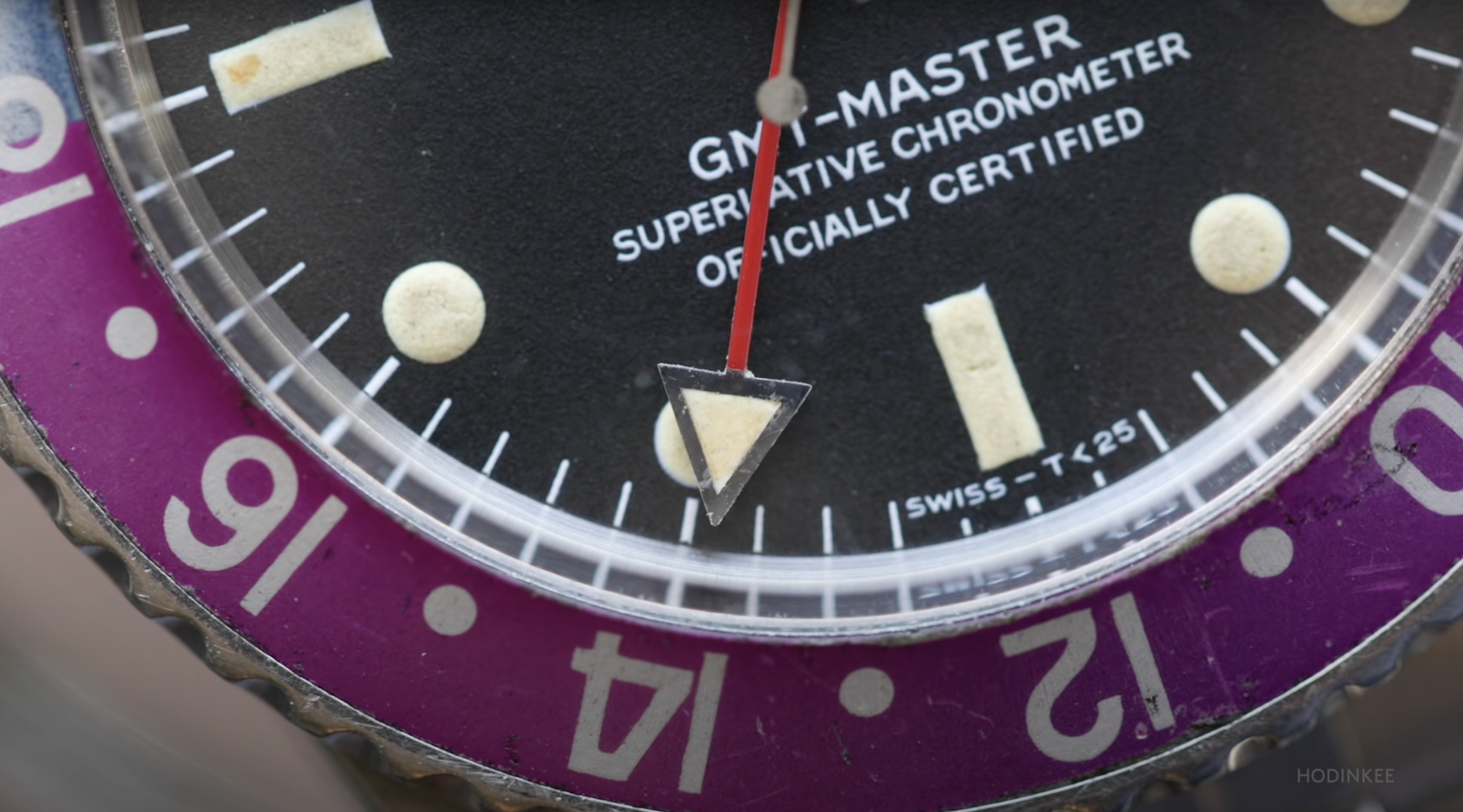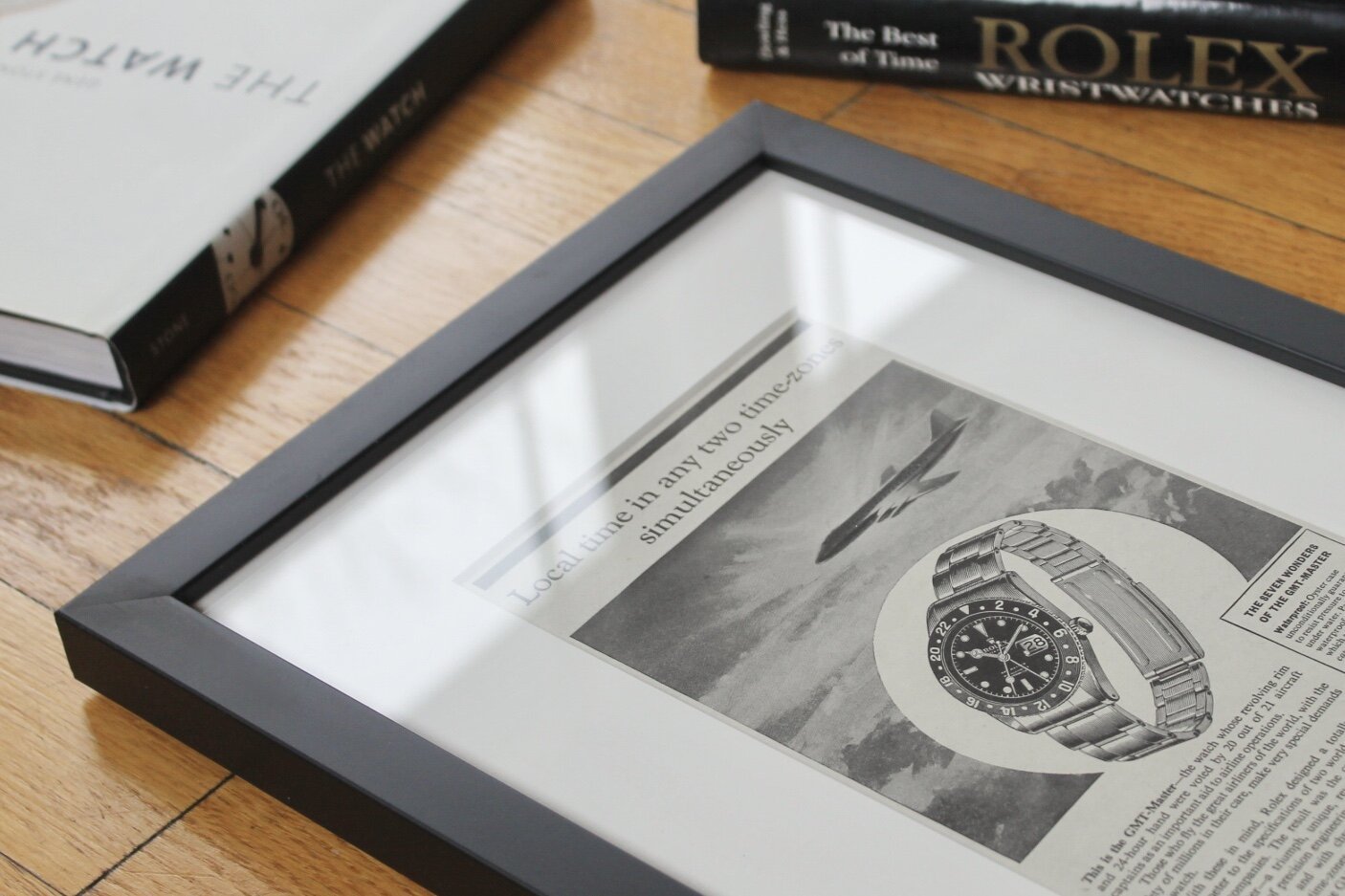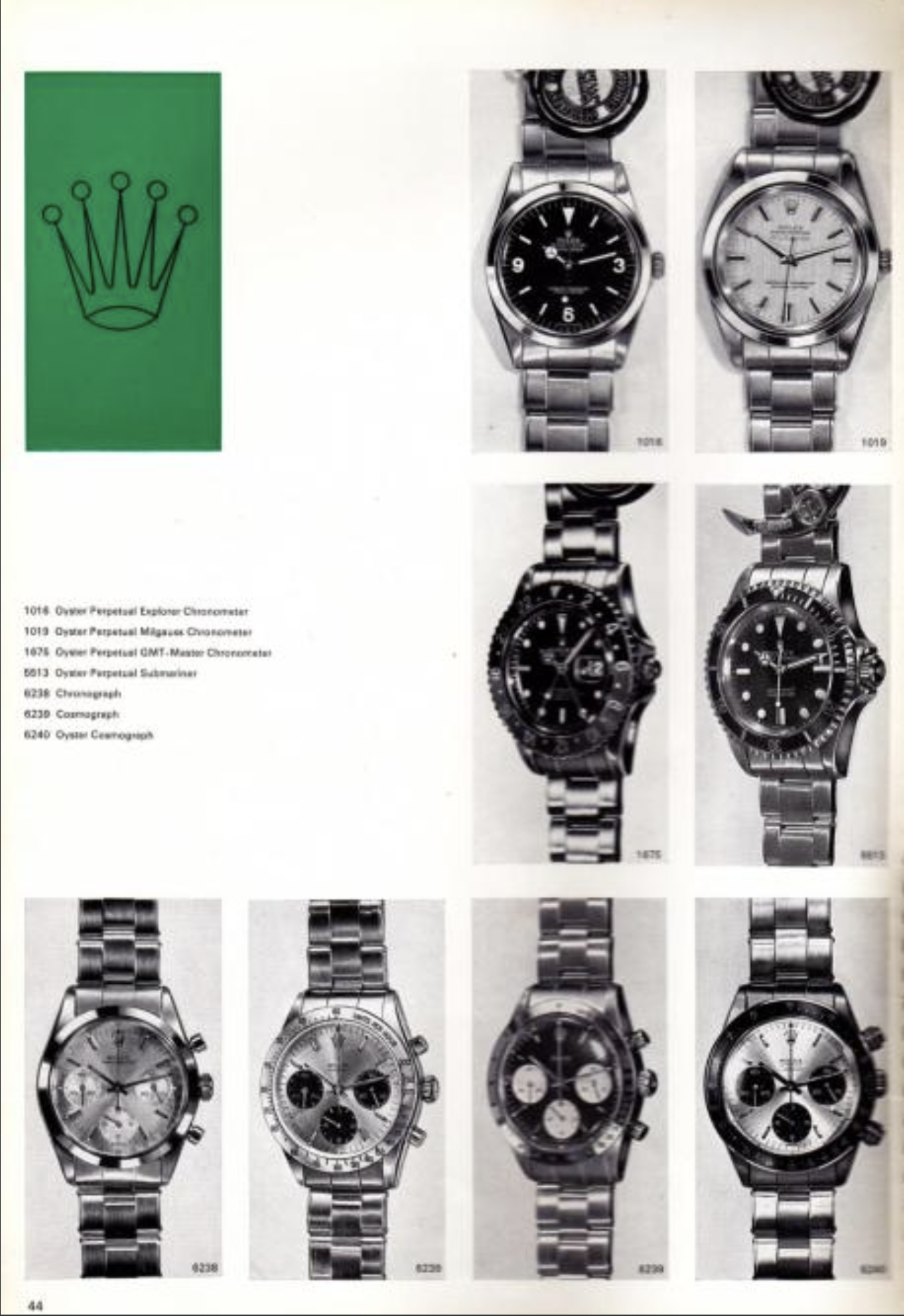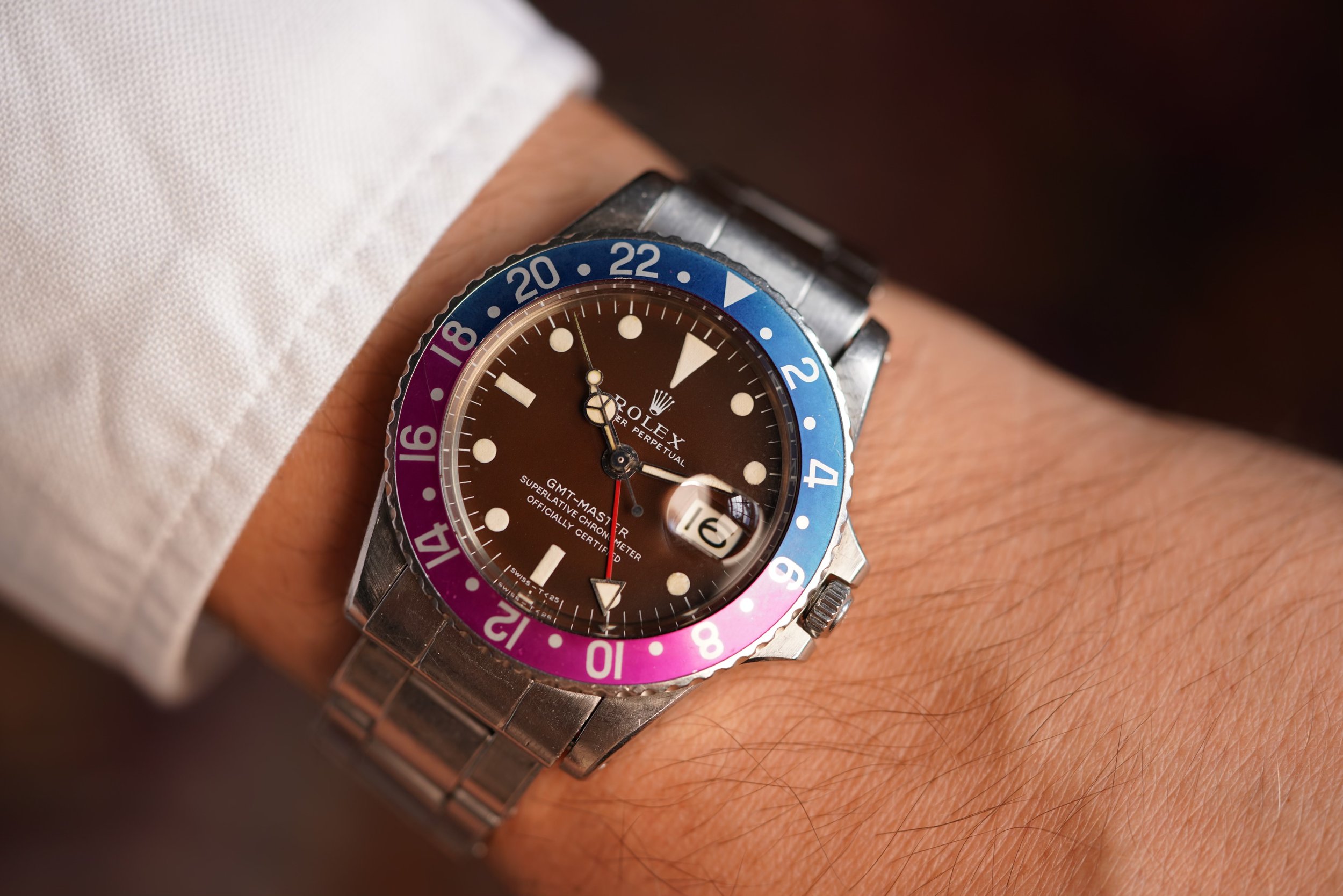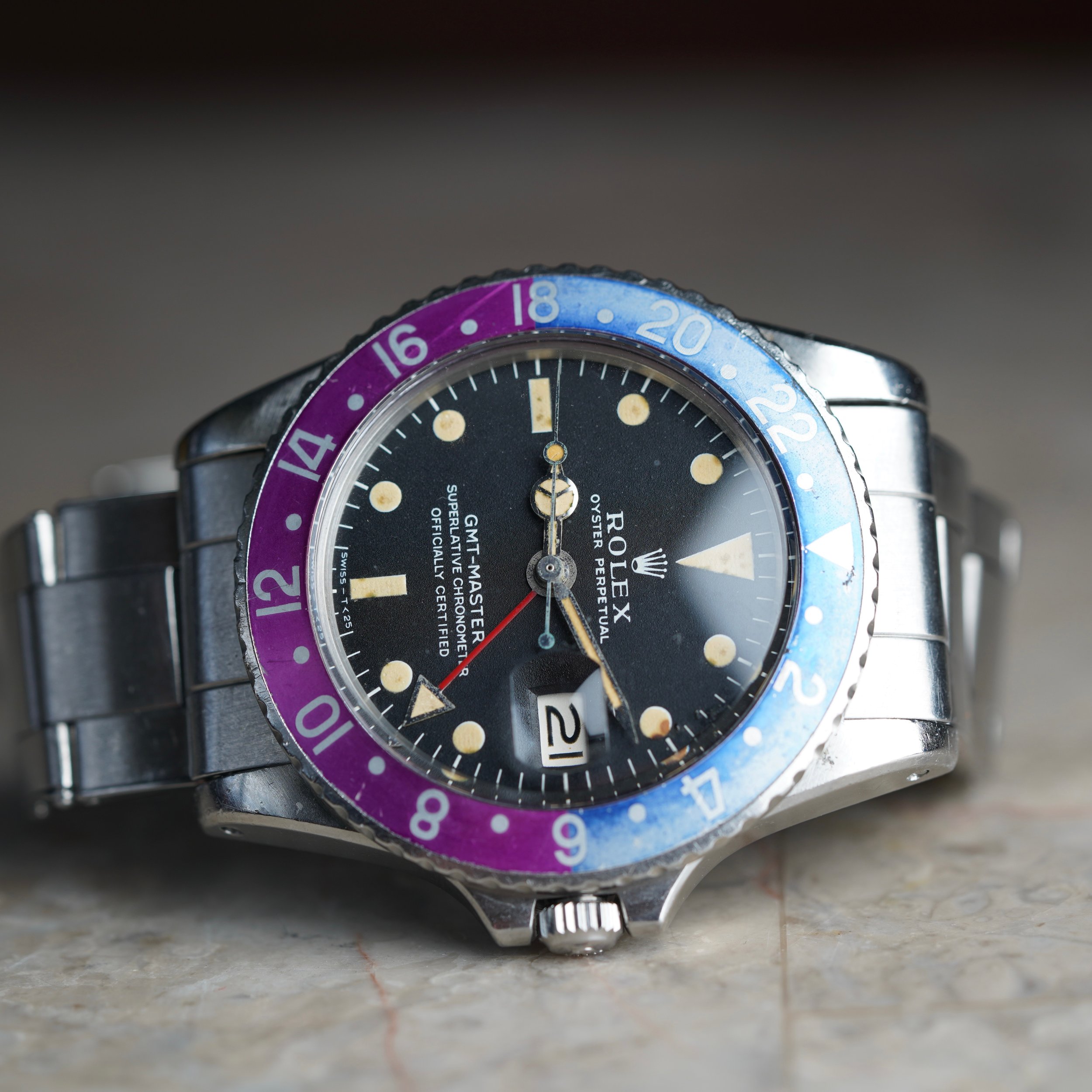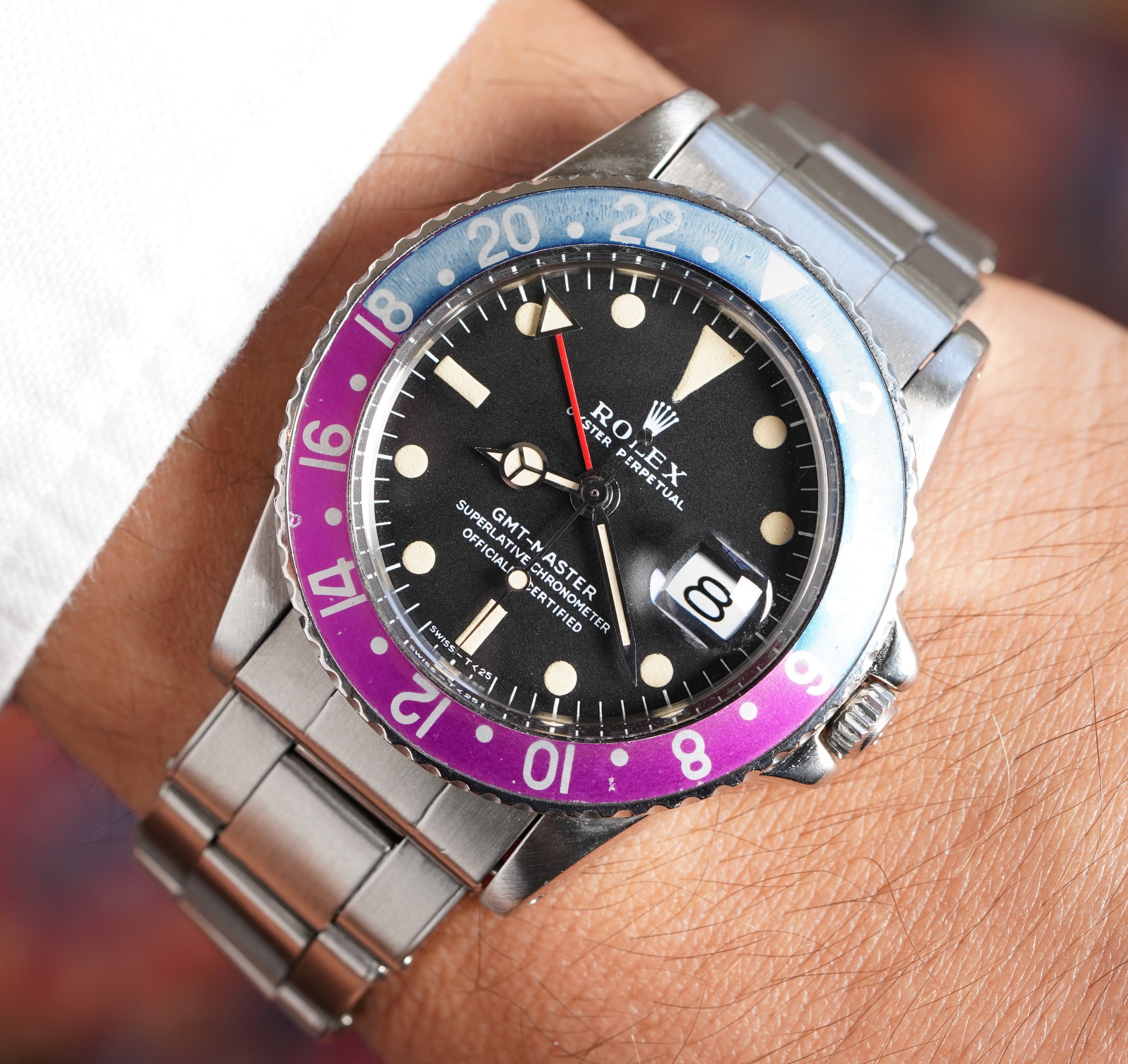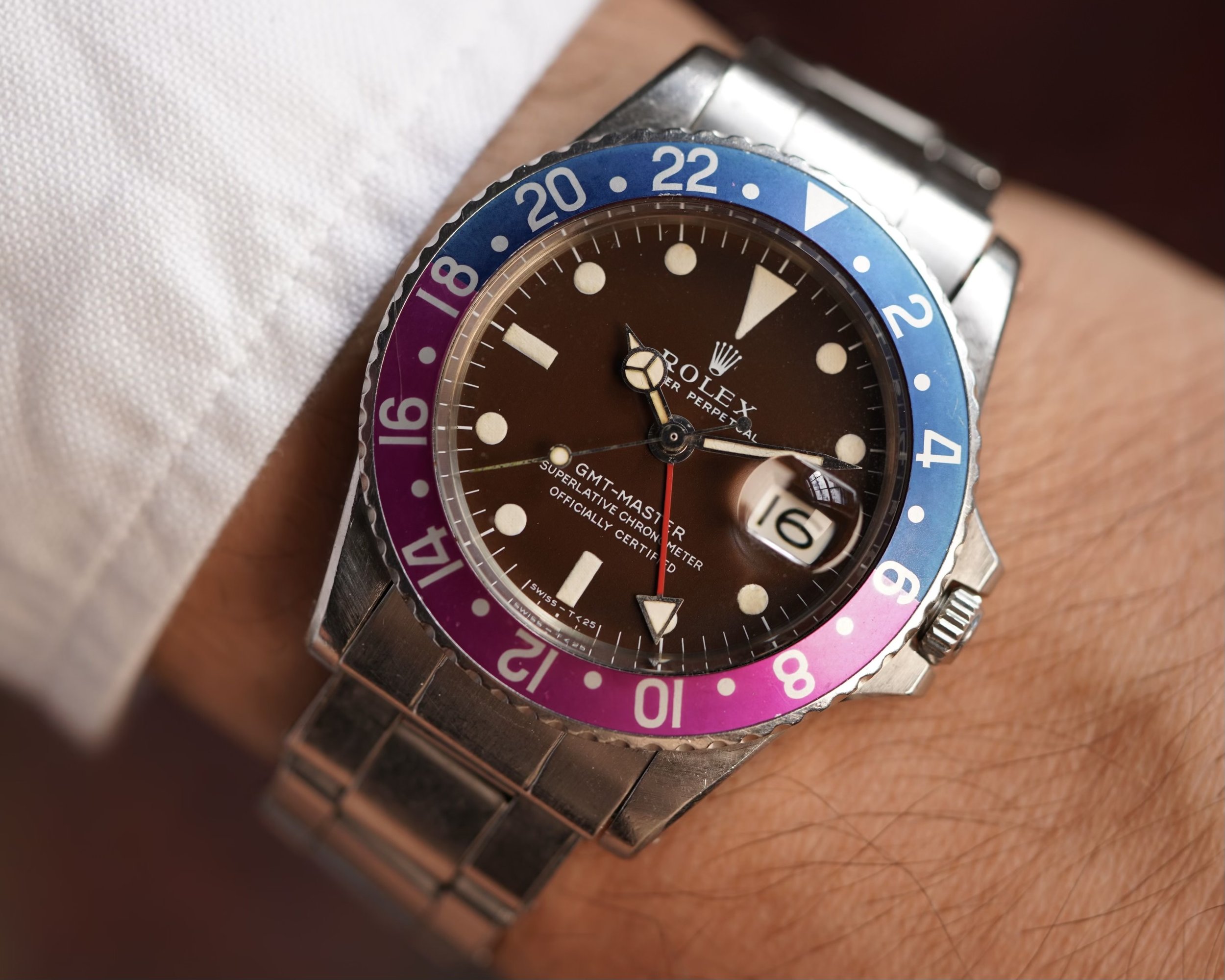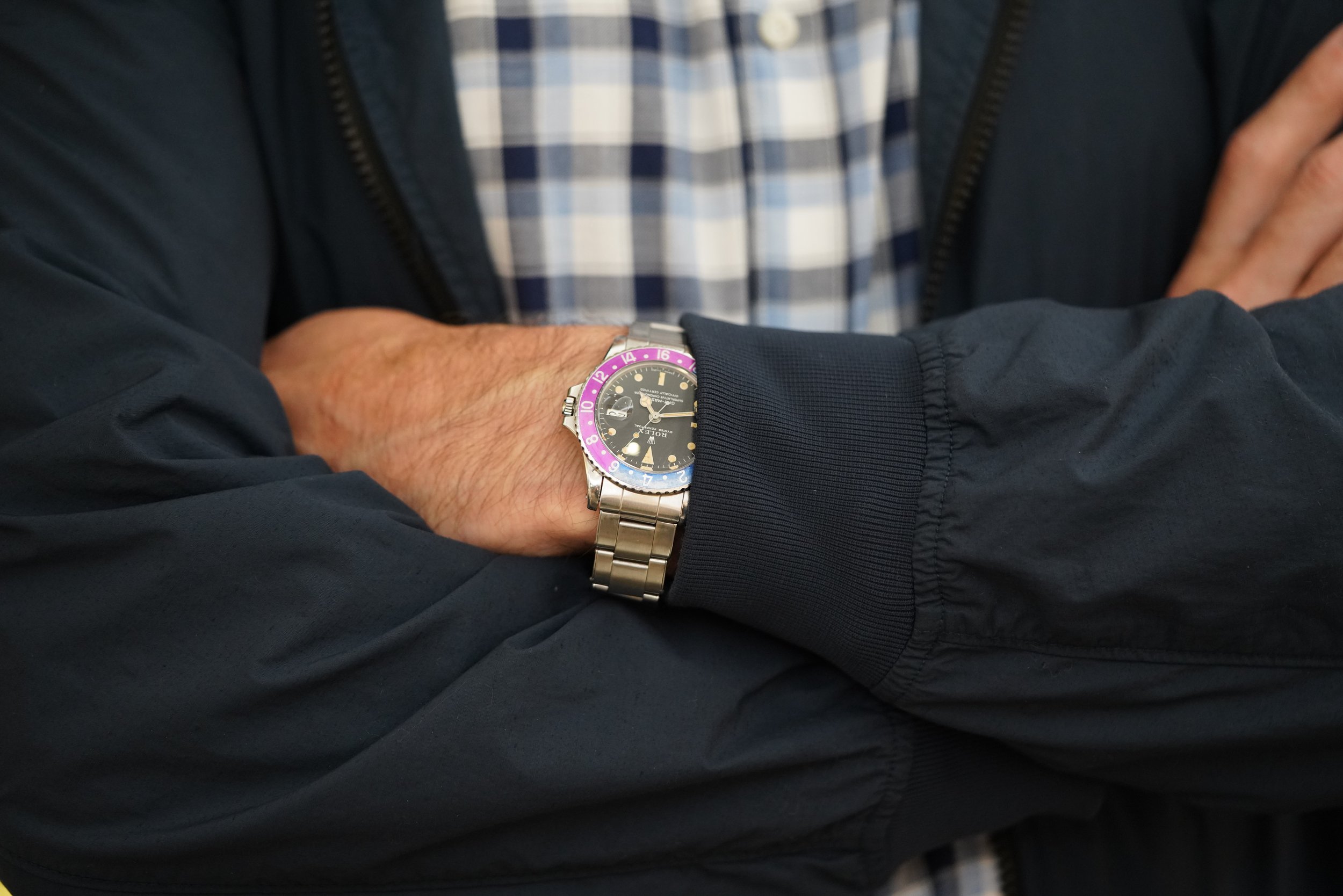What To Know About The Rolex “Fuchsia” GMT-Master
By Charlie Dunne
It took me a number of years to appreciate Rolex on a personal level. I’ve always been fond of the manufacturer’s reputation as being “bulletproof”, however other brands with a more refined aesthetic would be the ones I gravitated towards instead. This changed when I held the Rolex Oyster Perpetual reference 1018 (the reference which would become my first Rolex). After spending everyday for several months holding vintage Rolex watches, I would come to admire brand. Throughout this period, one of the models I would continue to encounter was the Rolex GMT-Master reference 1675. Yet, it was a distinguishing example that would remain engrained in my mind in the form of a GMT-Master 1675 with the “Fuchsia” bezel.
Note: You can find my in-depth article ‘Collector's Guide: The Rolex GMT-Master Reference 1675 In Steel’ within the link here:
https://www.windvintage.com/blog/collectors-guide-the-rolex-gmt-master-reference-1675-in-steel
Upon noticing this touch of flair, it would become a standout amongst the world’s most recognized watch models. While the highly informative Reference Points: GMT-Master video/article during the first quarter of 2020 is an unrivaled resource for the Rolex GMT, a closer look at the “Pink Panther” felt exciting as a second endeavor in Rolex articles for this website.
Video: HODINKEE The Rolex GMT-Master: The Most Iconic Traveller's Watch | Reference Points
As the story goes, Pan American World Airways (Pan Am) commissioned Rolex to create a wristwatch ideal for pilots to efficiently tell two time zones simultaneously. Introducing the GMT-Master reference 6542, a watch which famously was recalled in 1961 due to the famous claim from an American Naval officer that the luminous bezel caused him and his family’s cancer. As a result, the luminous-bakelite bezel would be changed to a non-luminous bezel, and eventually updated to an anodized-aluminum bezel by the late 1960.
Pan American World Airways was once the world's largest international airline, and is remembered for its glamorous cabins, passengers, and crew. Image credit: businessinsider.com
Image credit: pinterest
Rolex "Pussy Galore" GMT-Master Reference 6542. Image credit: Wind Vintage
Rolex “Fuchsia” GMT-Master Reference 1675
“Mark 1” Dial
The luminous material within the above example is a very puffy appearance, while others can be more flat. The matte dial is categorized as a Mark 1 (Mk 1), featuring a “Long E”. When authenticating a “Fuchsia” GMT, the Mark 1 dial is an important detail to verify. According to gmtmaster1675.com, “The Mark 1 dial is very easy to pick out amongst matte dial 1675s. Look first at the coronet and then look at the E in Rolex. If the coronet is string-like and the E has a long middle bar, it is a Mark 1.”
Note: Within the Reference Points article, the Mk 1 is cited to have been in production from circa 66-72.
For the predecessor matte dials (mark 0 and 0.5) the watch will feature a small triangle GMT hand.
Case & Bracelet
Both of the above example’s cases are unpolished, showing its true structure and strong bevels. Each are paired on a 20mm stainless steel 7206 Oyster Riveted bracelet which features the large crown logo on the deployant clasp. The interior clasp features the stamp designating it to the first quarter of 1969. While the Reference Points article cites only Jubilee bracelets, it is possible that the Oyster bracelets were also an option.
Bezel
While swapping bezel inserts between GMTs is quite common practice, it is paramount to look for the serial number to assess the legitimacy. Upon presenting the watch, Eric Wind emphasized the serial number located between the lugs at 6 o’clock. “It’s essential to identify the serial number with “Fuchsia” 1675 GMTs. The fuchsia phenomenon occurs on the bezels around the 1.8M and 1.9M serial range from circa 1968-1969.”
Calibre 1575
Image credit: https://watchguy.co.uk
Being that this GMT-Master was produced over a very short period, the watches will bear a calibre 1575. The cal. 1575 was introduced in circa 1965 and remained in production until circa 1971. It is a non-hacking movement which operates at a 19,800 VBH.
Source: The Movement (GMTMaster1675.com)
Similar “Fuchsia” GMT without fading. Image credit: Wind Vintage.
As per the blues, Wind mentioned collectors can find a wide range of shades. You can really find yourself appreciating the slightest differences. “This [photo above] is a great example that belongs to Dr. Greg Petronzi (@true_patina) which shows how the blue looked originally without fading! Compare this with [the photo below]. It features very even white striations of fading.”
Another similar “Fuchsia” GMT with fading. Image credit: Wind Vintage.

